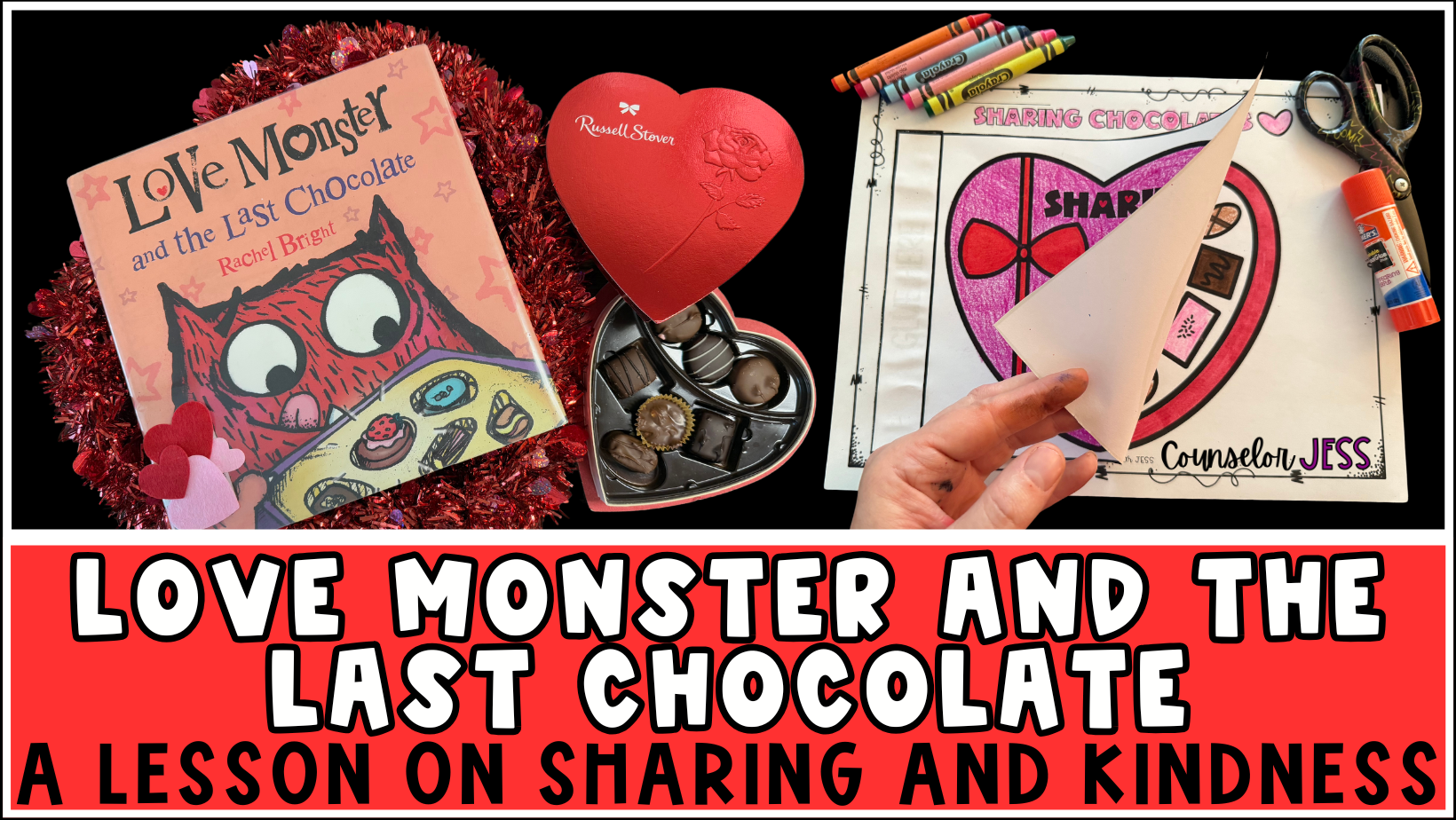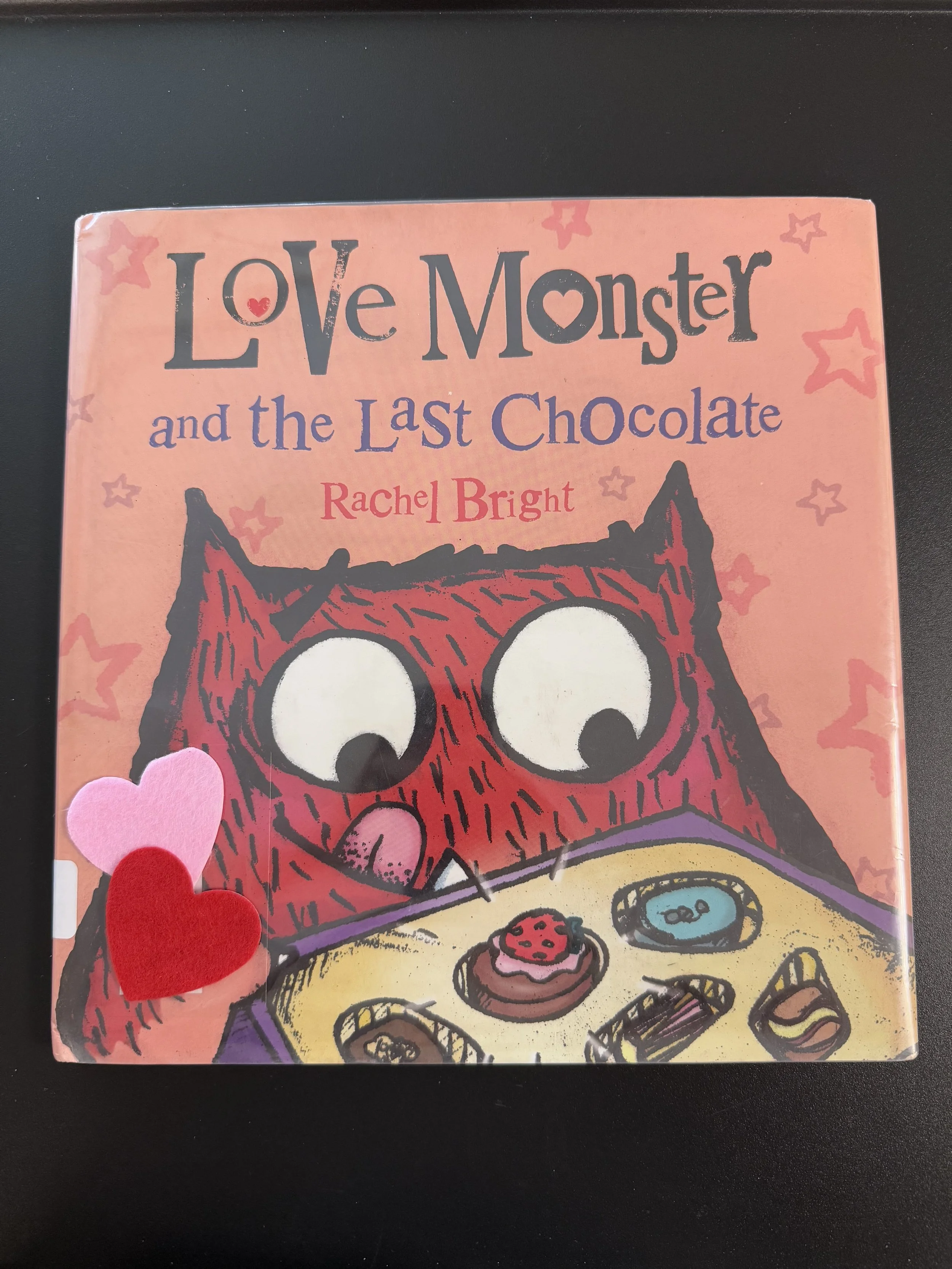Easy Object Lesson on Sharing (Perfect for Valentines Day!)
Teaching Your Students About Sharing
Valentine's Day is the perfect time for an object lesson on sharing.
If you’re just looking for a resource to help you do this, click here to see the one I’ve created.
This easy, no-prep lesson pairs perfectly with the charming book Love Monster and the Last Chocolate by Rachel Bright.
Together, they create a Valentine’s Day activity that will not only teach your students about sharing but also leave them smiling long after the lesson ends.
Object lessons are a fantastic way to make big ideas like kindness and generosity relatable for little learners.
They give kids a hands-on, visual way to connect with the topic, which helps those lightbulb moments happen.
In this post, I’ll share how you can use this Valentine’s Day-themed resource to bring the magic of sharing to your classroom in a way your students will love.
Why Teaching Sharing Matters in Early Childhood
Section 1: Why Teaching Sharing Matters in Early Childhood
Sharing can be one of the first big social skills kids learn in early childhood, but it doesn’t always come naturally.
For children in Pre-K through 2nd grade, the idea of giving up something they value or taking turns with a toy can feel challenging.
That’s why teaching sharing is so important—it’s not just about the act itself but about helping kids develop empathy, patience, and kindness toward others.
When kids learn to share, they’re practicing foundational social-emotional skills that will serve them throughout their lives.
Sharing helps them navigate friendships, work collaboratively, and resolve conflicts peacefully.
It’s also an excellent way to reinforce the concept of fairness, which can be hard for little ones to grasp at first.
Valentine’s Day is the perfect time to introduce or reinforce this concept because the holiday is already centered around love and thoughtfulness.
This lesson is about more than just teaching kids to share their candy, crayons or toys.
It’s about helping them understand the joy that comes from making others feel included and cared for.
The Magic of Object Lessons in Teaching Life Skills
Object lessons are a powerful teaching tool, especially for younger students who thrive on hands-on, visual learning experiences.
An object lesson uses a tangible item, story, or scenario to represent a larger concept, helping kids connect abstract ideas to something they can see or interact with.
For example, using a favorite snack to demonstrate sharing makes the concept more relatable and memorable for little learners.
Why do object lessons work so well?
It’s because they engage multiple senses and tap into students’ natural curiosity.
Instead of just hearing about a concept, students get to experience it in a way that feels real and relevant.
This makes the lesson stick—not just in their minds but in their hearts, too.
When it comes to teaching about sharing, object lessons are particularly effective because they allow students to see the immediate impact of their actions.
Whether it’s dividing up a pretend chocolate bar or role-playing a sharing scenario, kids can better understand the emotions and outcomes tied to sharing.
The story itself is an object lesson - Love Monster must decide whether to keep the last chocolate for himself or share it with his friends.
By combining the story with hands-on activities, you’ll help your students explore the importance of sharing in a way that’s fun, relatable, and perfectly suited for their age group.
Easy Object Lesson on Sharing Using This Resource
This Valentine’s Day, you can make the concept of sharing come alive in your classroom with a simple yet impactful object lesson using the Love Monster and the Last Chocolate resource.
Here’s how to structure your lesson for maximum engagement and learning:
Step 1: Read Love Monster and the Last Chocolate
Start by reading Love Monster and the Last Chocolate by Rachel Bright to your class. This heartwarming story sets the perfect stage for discussing the challenges and rewards of sharing.
As you read, pause to ask questions that spark curiosity and empathy, such as:
“How do you think Love Monster feels about the last chocolate?”
“What would you do if you were Love Monster?”
“How do you think his friends will feel if he decides to share?”
This discussion helps students connect emotionally with the story, setting the tone for the activities ahead.
Step 2: Book Discussion and Mini Lesson
After the story, dive deeper with a short mini lesson on sharing. Use examples from the book to define what sharing is and why it’s important. Highlight key points, such as:
Sharing shows kindness and helps us make friends.
Sharing isn’t always easy, but it makes everyone feel good.
When we share, we create happy moments for ourselves and others.
Encourage students to share their own experiences with sharing—both good and bad—and talk about how it made them feel.
Step 3: Practice Scenarios
This resource includes practice scenarios where students can role-play different sharing situations. These scenarios allow kids to think critically about how they would handle challenges, like sharing a favorite toy or including someone in a group activity.
Role-playing is a great way to help students understand the emotions behind sharing and develop strategies for real-life situations. You can even guide them with prompts like:
“What would you say to your friend if you wanted to share?”
“How can you make sure everyone feels included?”
Step 4: Sharing Craft Activity
The sharing craft included in this resource is the perfect way to wrap up the lesson.
With three differentiated versions to choose from, you can adapt the activity to meet the needs of your students.
The craft gives students a chance to reflect on the lesson in a hands-on, creative way.
As they work on their projects, encourage them to think about what they’ve learned about sharing and how they can practice it in their own lives.
Step 5: Reinforce the Lesson Throughout the Day
After completing the lesson, look for moments during the day to reinforce the concept of sharing. Celebrate acts of kindness and remind students of the joy that comes from making others feel happy.
This Valentine’s Day, your students will leave with more than just treats and cards—they’ll walk away with a deeper understanding of what it means to share and care for others.
More From Counselor Jess
Interested in learning more?
Or being the first to know when I release new resources?





